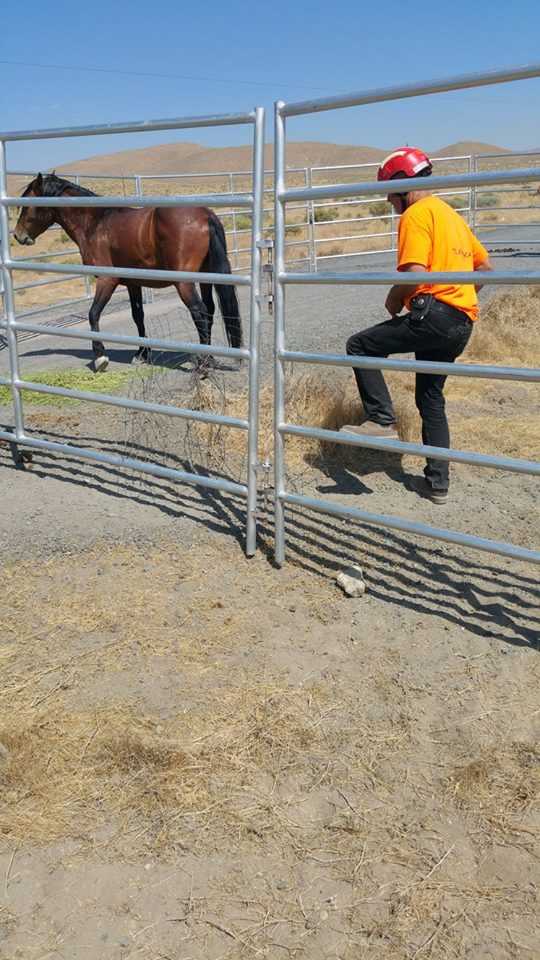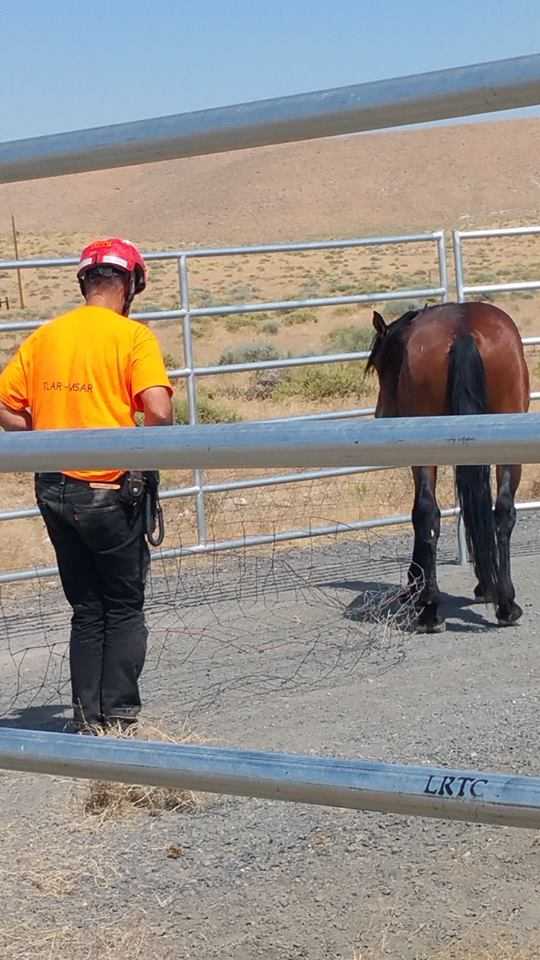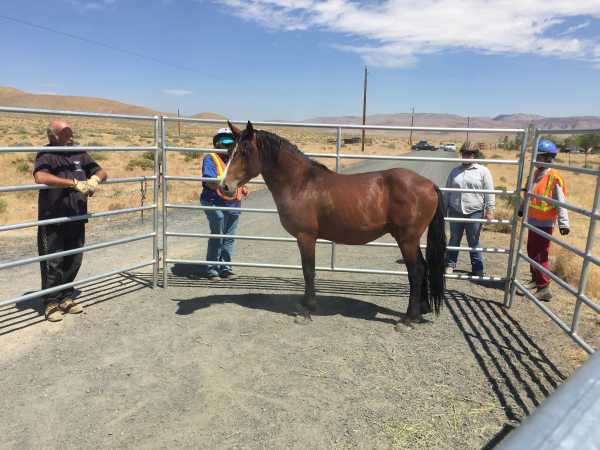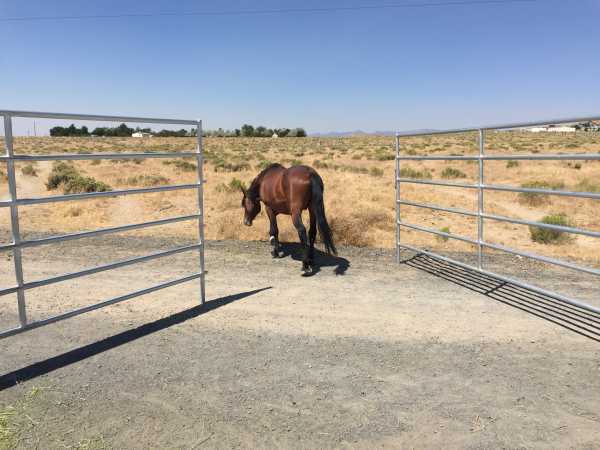|
At 0846 Hours on 16 July, 2017, the Stagecoach TLAR team received a report of a range horse "stuck" in the middle of Lucille Ave., Silver Springs. Rescue 3 responded followed by Transport 3. (Transport 3 carries 66 feet of 6 ft. tall portable chute panels.) Four members were part of the initial response.
Upon arrival we found a feral range stallion in the middle of the road with one hind leg firmly snagged in field fencing. Apparently the stallion tried to jump the fence, got a leg caught and "zippered" some 75 feet of fencing from the posts until the fence went taut and stopped is movement.
Observations on arrival.
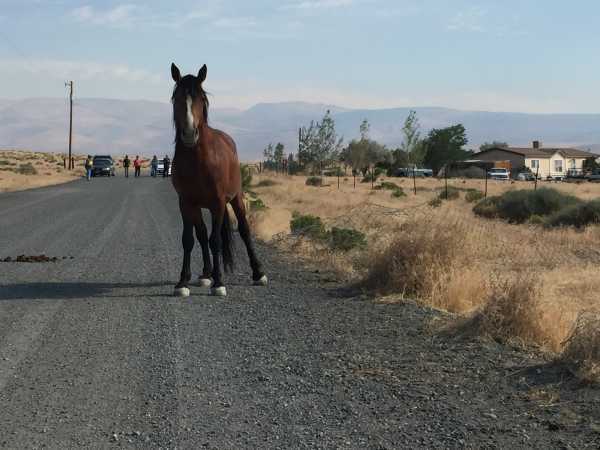
It was evident that the horse was stuck fast and that the fence wire was cutting into his leg, requiring a calculated extrication plan.
Incident Structure
The incident was organized with an IC, formal Safety Officer and Operations Section Chief.
The IC was responsible for incident command as well as approaching the horse and handling the cutting equipment as the incident progressed.
The Safety Officer managed spectators as well as several nearby free-roaming range horses, preserving a buffer zone around the operational area.
The Operations Section Chief (an off-duty fire fighter who arrived on-scene who has horse experience) was responsible for placement of panels and construction of a trap corral.
Initial Actions
A condition report was radioed to dispatch along with a notification that we were closing the road in order to facilitate safe operations.
A perimeter was established and the road blocked by vehicles at opposite edges of the perimeter.
The horse was quietly approached to determine his reactivity. He did not want to be approached but he was not overly reactive.
Closer examination (from a safe distance) showed that the wire was wrapped tight and the horse was not going to come free through any attempts to move him in order to take the pressure off the fencing material.
A safety meeting was briefly held where everyone was involved in a discussion of general safety orders, critical safety issues that pertained to this incident, the incident's overall strategic plan, and assignments as to who would be working under whom.
A close-up view of the entanglement.
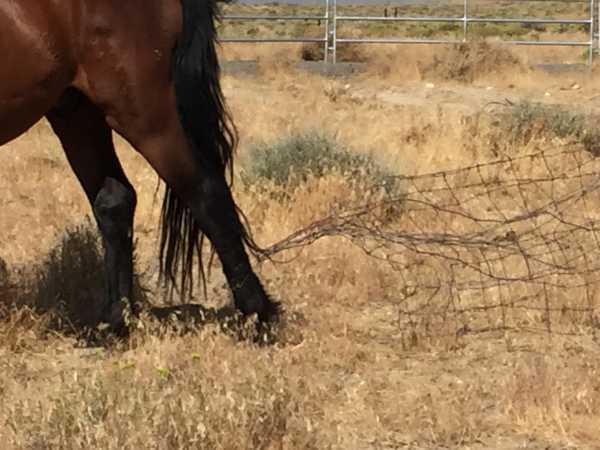
Next actions taken
Operations constructed a semi-circle of panels on the roadway. (The roadway runs north-south.)
The horse pendulum-swung to the south in response to the panels being constructed. A pickup truck was placed at the southeasterly end of the semi-circle to discourage the horse from trying to struggle and move farther south. The initial strategy was to try to "swing" the horse back into the horseshoe of panels, then close him in.
Relative position of the horse and initial containment strategy.
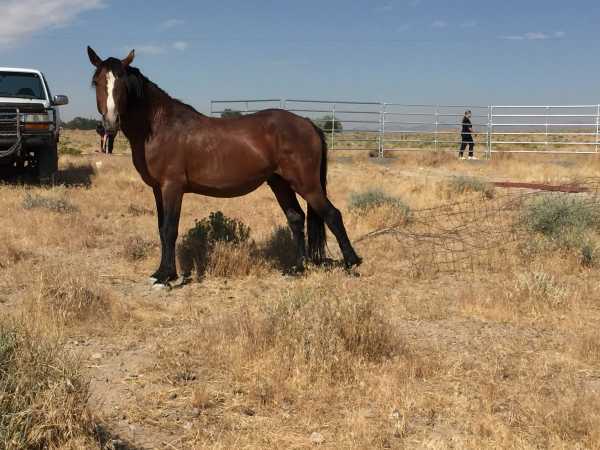
The horse was reluctant to swing toward the panels so responders took positions to discourage him from swinging completely away from the developing corral. That aversion to the panels was also used as an opportunity to try to cut the wire with a pole shear, but the fence material was too strong.
Trying the pole shear. Working from a low position to reduce reactivity.
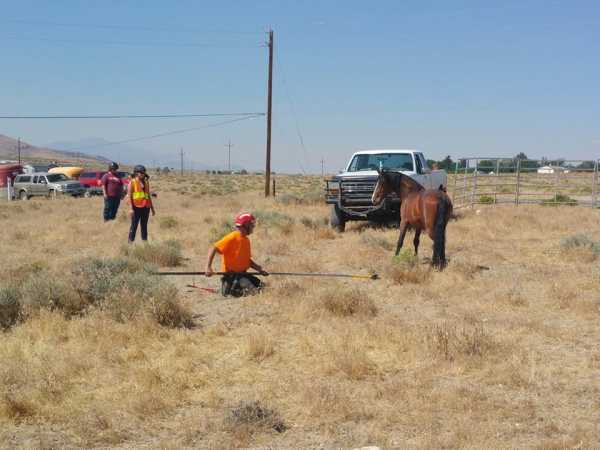
It became evident that we were going to have to start with a larger containment area in order to get the horse surrounded. Transport 4 was requested with 66 additional feet of panels.
Next actions taken.
Transport 4 arrived and Operations expanded the trap corral.
We now faced two challenges.
First, the ground had a few fair sized sagebrush plants scattered about. The horse didn't seem too concerned dragging the fence over the sagebrush when swinging to avoid the panel construction, but they made swinging him toward the panels difficult. Members had to carefully "assist" the movement of the fencing material past these obstacles while other members carefully encouraged the horse to swing back toward the road and corral.
Second, we had to construct the corral over the taut fencing material. We were concerned that vibrations sent through the fencing could cause the horse to react. Therefore we carefully stood on the fencing while panels were being placed over and past it.
Next actions taken.
Now the horse was safely contained in an enclosed corral, relieving a number of concerns.
The next actions involved cutting the fencing at the corral panel line, then entering the corral and shortening the material still attached to the horse. Once the fencing that was still attached to the posts was cut, the horse was free to move about the containment area but was dragging two lengths of fencing behind him.
Some high value hay had been placed inside the enclosure to help calm the horse and we waited a few minutes for him to get settled in the confined space.
The IC entered the enclosure and after determining the reactivity of the horse, cut away sections of fence starting some distance away and working up to as close as he could without the horse reacting. Keeping the ambient energy low and eliminating distractions were critical during this operation.
| 







